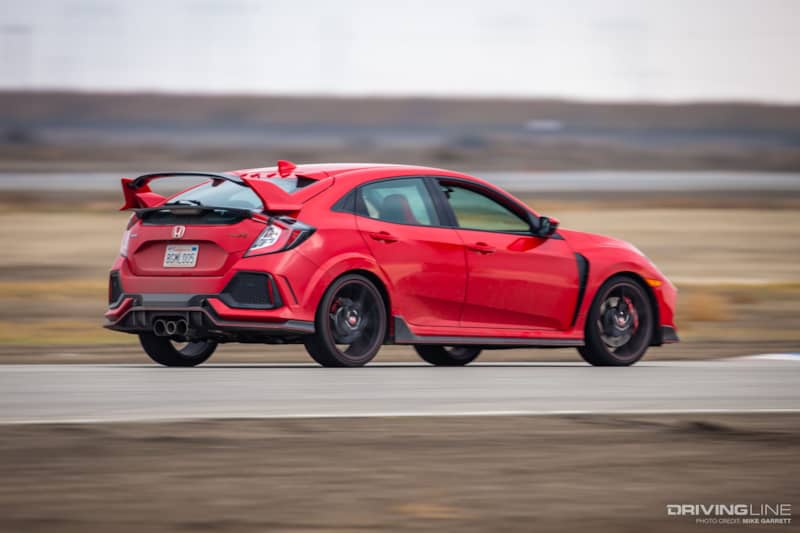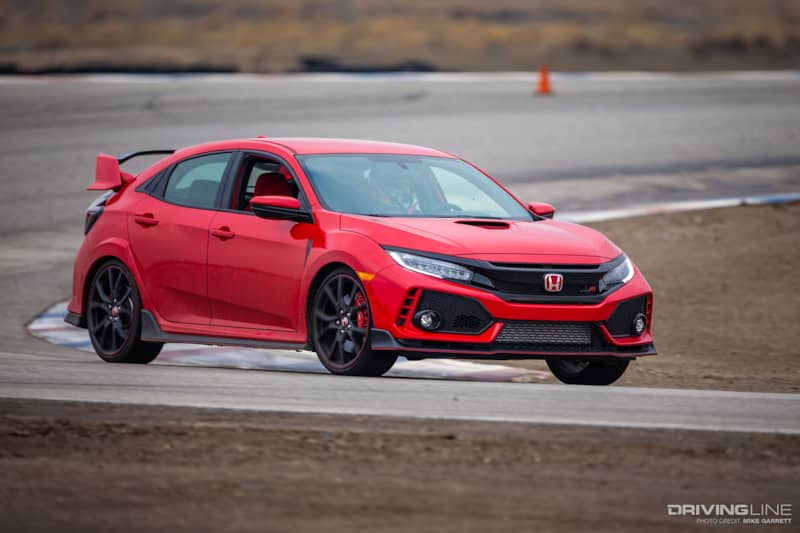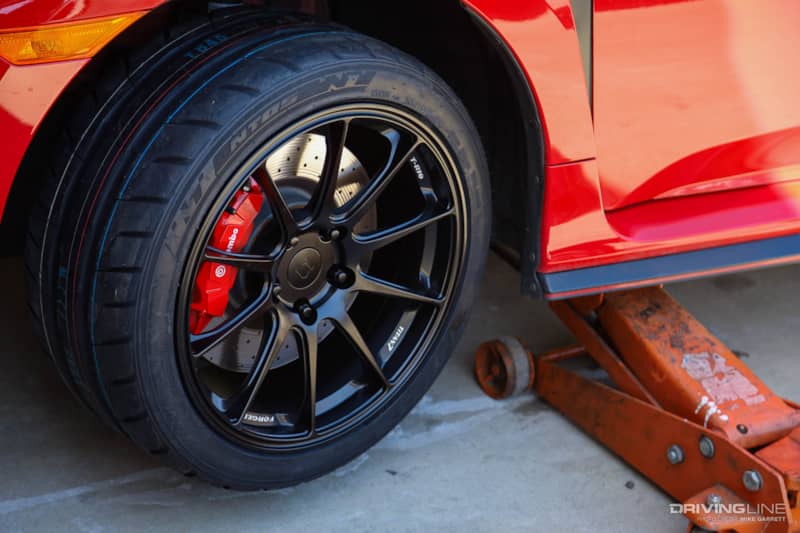Civic Type R, Mustang 5.0 & More: FWD vs RWD Track Day Impressions & Advice
Front-wheel drive. While it historically might be the least preferred layout when it comes to hardcore enthusiast vehicles and sports cars, a properly setup FWD machine, especially in the modern era, can be both very fast and very fun.
Could it even be superior to the traditional front-engine rear-drive setup when it comes to weekend track days? That depends.

I’m no veteran track rat or hotshoe racer, but I do have several of track days under my belt: first in a Mk7 Volkswagen GTI followed by a 2018 Honda Civic Type R (which are both FWD hatchbacks), and then in a 2016 Ford Mustang GT.

All three are later model performance cars popular as track platforms, and my time behind the wheel of these cars has given me some useful experience, which I’ll try to formulate into some basic observations for entry and amateur level drivers regarding FWD vs RWD in a track enviornment.

FWD Impressions
Purely from a track driving perspective, a FWD car probably wouldn’t be anyone's first choice. But when it comes to cars that can easily double as daily drivers and track machines without breaking the bank, a front-drive hatchback or sedan is hard to beat. And they might also be the safest choice.

For as fun as they are, track days can be intimidating. And if you fear going above your limits, spinning off the track or damaging your car, a FWD car could be perfect, as they are generally predictable and are more likely to understeer than to send you spinning off track from oversteer.

Yes, you can certainly spin a FWD when the rear end gets light or during fast transitions, but overall there should be nerve-racking situations. But that doesn’t mean fun-sapping understeer is unavoidable.

Driving both the GTI and Type R on the track with their sticky tires and their limited slip differentials, it's downright amazing just how good they can be.

And best of all, it's much easier to really push the car without worrying about getting into trouble. Even in a powerful front-drive car, a good LSD will allow you to mash the throttle out of corners without much concern.

In my limited experience, the biggest drawback to driving a FWD on track isn’t any lack of fun or performance, it's simply about tire wear. When just one end of the car is responsible for most of your braking, your steering - and putting all of your power down don’t be surprised to see your front tires wear out quickly.
RWD Impressions
In contrast, driving a RWD car on track, especially one with a decent amount of a horsepower like a Mustang, Camaro or Corvette is a very different ballgame. There's a tried and true balance to it. And you are always mindful of what your right foot is doing, especially when exiting corners.

A big challenge of driving a high-powered RWD on track is keeping the tail in line - and there’s a reason why most track prepared RWD cars run the widest rear tires they can. A lot of drivers also want to run the widest front tires they can to keep the handling neutral a but the square vs staggered debate is a subject for another story.

Fortunately, a lot of modern RWD performance cars also have pretty advanced traction and stability control that can be set up to allow just enough oversteer without getting you into trouble. And as you can get more comfortable with the car's behavior you can stop relying on the software.

No Wrong Choice
Ultimately a RWD car will likely have a higher learning curve and will take more experience and a little more courage to get the most out of. But it will also be the most rewarding when you get it right. You also won't notice your front tires wearing out quite as fast.

In my own case, my Civic Type R and Mustang GT would probably run similar laptimes in the hands of a skilled driver, but the FWD layout and impressive front-end grip of the Honda made it an easier car for me to hop in and drive fast.

With so many great, proven track cars of all drive types out there, it’s hard to go wrong with either layout. And that's before you even consider an AWD layout, which has its own pros and cons.

A RWD performance car might be the more traditional choice with a higher overall ceiling for speed, but a well-setup FWD can be every bit as enjoyable and deceivingly fast thanks to the wonder of modern differentials, suspension setups and performance tires.
FWD, RWD or AWD that combines aspects of both—there’s never been a better time for track enthusiasts.
More From Driving Line
- Looking for more track day insight? Here are five unexpected lessons to think about.







